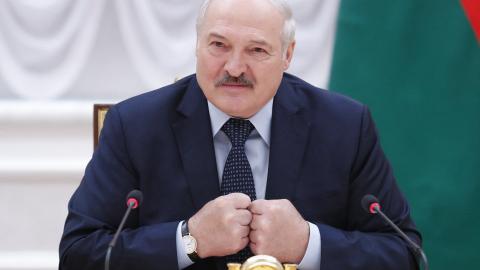It will be three years next week since presidential elections in Belarus that many believed to be fraudulent. The outcome led to the biggest protests and greatest civil unrest the country had ever seen.
In the months after the August 2020 elections, hundreds of people were arrested for protesting against the questionable results. Many opposition leaders and journalists were thrown into jail or forced into exile in neighboring Poland and Lithuania. Eventually, it was assistance from Russia that helped President Alexander Lukashenko to cling on to power. Three years later, Belarus remains a thorn in Europe’s side and a cause for concern for regional stability.
For years, many policymakers across Europe hoped that Belarus would someday change its ways and enter the European fold. However, after the crackdown on civil society after the August 2020 elections, the forcing down of a commercial airliner on dubious pretenses to arrest an opposition journalist in January 2021, and Belarus’s ongoing support for Russia’s campaign against Ukraine, this view was hopelessly naive.
For the US too, finding the best way to deal with Belarus has been a conundrum. Unlike previous US administrations, the Trump administration made efforts to open the door for engagement with Belarus before the events of August 2020. In August 2019, National Security Adviser John Bolton visited Minsk, and Secretary of State Mike Pompeo did so in early 2020. In 2019 the US reinstated its ambassador to Belarus after a 10-year hiatus. This was all short lived and by 2021 Belarus had denied entry into the country for the US ambassador. With hindsight it is clear that these efforts were naive.
Recent developments in Belarus have been a cause for concern when it comes to regional stability. Relations between Belarus and the rest of the transatlantic community are at a new low. With Russia’s invasion of Ukraine in its 18th month and no end in sight, the last thing Eastern Europe needs is another conflict. Heading into the second half of 2023, there are three areas that policymakers should watch when it comes to developments in Belarus.
The first is the newly established presence in Belarus of thousands of Wagner Group fighters. Although this so-called private military company has been active across much of Africa for years, it came to international infamy with its recent role in Ukraine and the attempted mutiny in Russia this summer. As part of the deal that Lukashenko brokered between Wagner’s leader, Yevgeny Prigozhin, and Vladimir Putin, the group was allowed to leave Russia and move to after June’s failed uprising.
After that, Lukashenko expressed concerns about his ability to control the actions of the group. There are now reports of Wagner fighters near the Suwałki Gap, the narrow 100-kilometer strip of land at the border between NATO members Poland and Lithuania that links Belarus with Russia’s Kaliningrad exclave. There is a worry that the Wagner Group will stoke tensions between Belarus and neighboring countries, and this could bring NATO into conflict with Minsk. In response, Lithuania and Poland have deployed their own forces along the border with Belarus. Poland deployed an additional 10,000 troops near its border with Belarus just last week, for example.
Second, Belarus continues to enable Russia’s invasion of Ukraine. Since it began in February 2022, tens of thousands of Russian troops have used Belarusian territory as a place to stage, train, and launch attacks into Ukraine. In the early days of the invasion, Russian forces made it to the outskirts of Ukraine’s capital Kyiv before being pushed back across the Belarusian border. Since then, there has been a concern that Russian forces might try another attack on the capital. Long range missiles, drones, and fighter jets that are used to attack Ukraine are also regularly launched from Belarusian airfields. As long as Lukashenko remains a willing host to Russian forces, there will always be a threat to Ukraine’s capital and a prolonging of the war.
Finally, if Putin is to be believed, there are now Russian nuclear weapons in Belarus. Speaking at the St. Petersburg International Economic Forum in June, the Russian president said the first nuclear weapons hadalready arrived in Belarus and the rest will be delivered this year. This makes Belarus an even greater challenge for NATO. It is also unclear who is in control of these nuclear weapons. After the first ones arrived, Lukashenko said: “God forbid I have to make a decision to use those weapons today, but there would be no hesitation if we face an aggression,” suggesting he had control over their use. This issue is taken so seriously that it warranted a mention in the July 2023 NATO summit declaration, which stated that such moves “undermine strategic stability and overall security in the Euro-Atlantic area.”
Any armed conflict between Belarus and its NATO neighbors would probably bring in the US. Since Belarus and Russia have a defense pact, a war between Belarus and its neighbors could mean a bigger war involving the US and Russia. While Belarus may be thousands of kilometers away from the Gulf, it does not take a leap of imagination to see how the whole world could be impacted if another major conflict breaks out in Eastern Europe on top of the war in Ukraine. The global implications of such an event are too enormous to fathom.
Global leaders and policymakers should be urging cooler heads to prevail in Belarus. Ignoring Minsk, and dismissing Lukashenko’s rhetoric as bluster, is no longer a viable strategy.



















